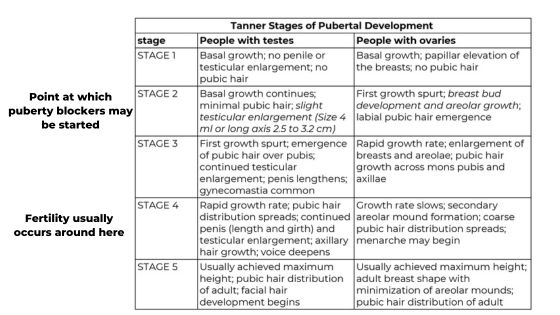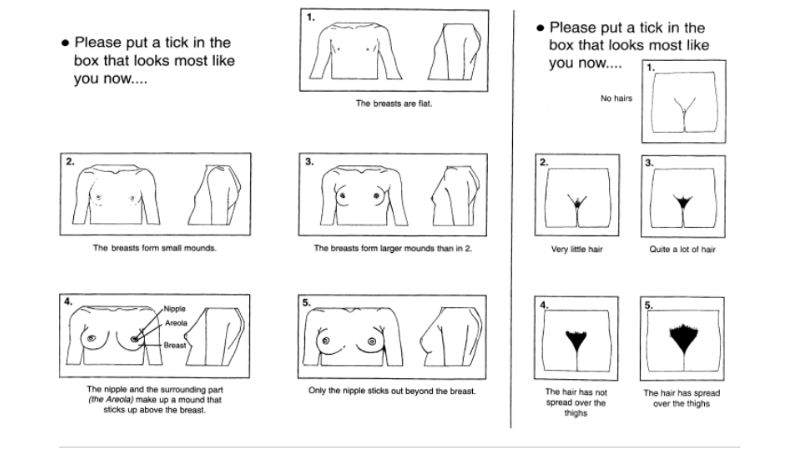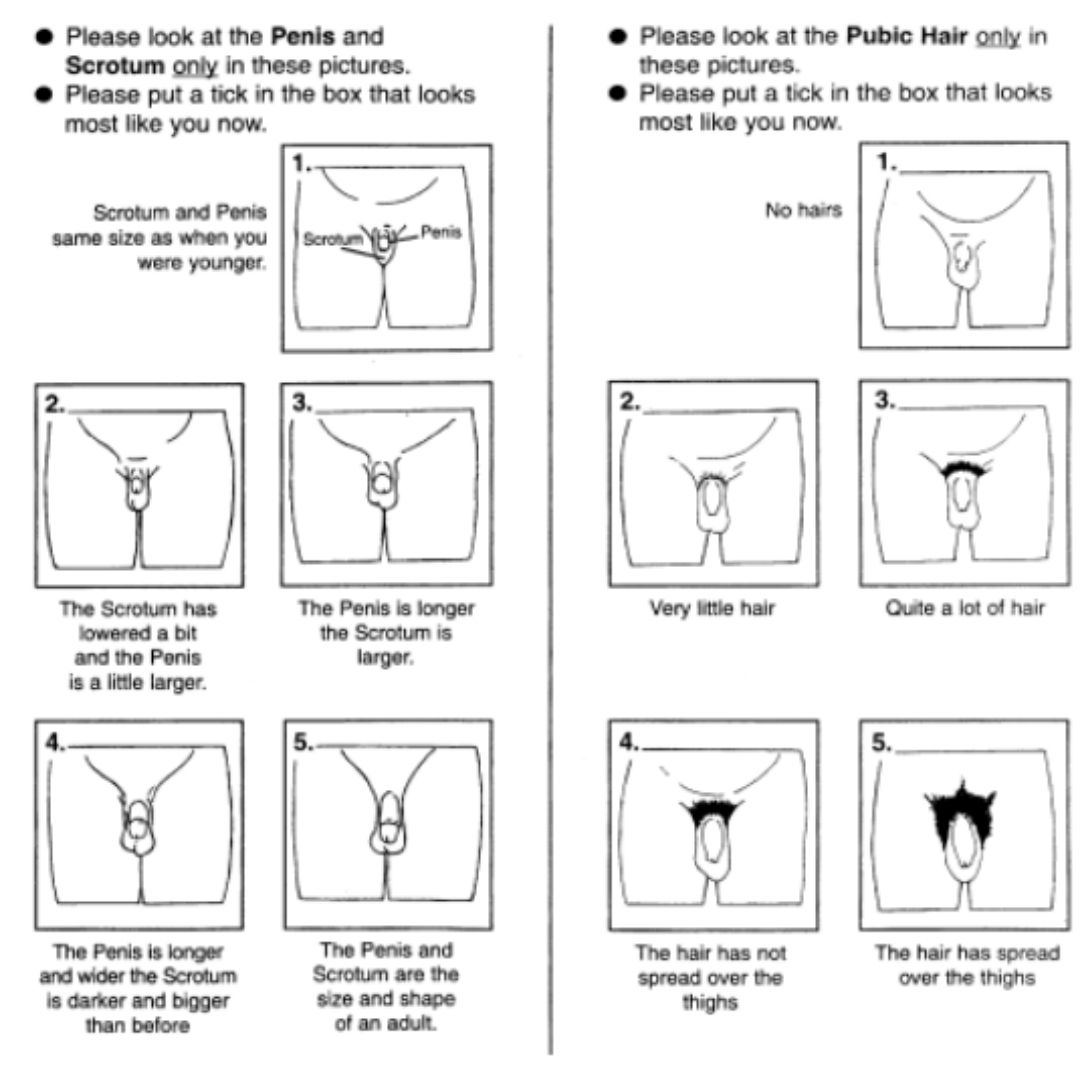When are Puberty Blockers and/or Gender Affirming Hormones appropriate based on puberty progress?
When is a body ready for puberty blockers or gender affirming hormones?
Puberty isn’t an overnight switch—it’s a complex, years-long process of physical and emotional transformation. Most young people begin these changes in their tween or early teen years.
At QueerDoc, we use Tanner stages, a medical framework based on physical markers of puberty, to understand where someone is in their development. While labs and bone age X-rays can offer additional insight, a physical exam remains the gold standard.
To support autonomy and privacy, we’ve also included visual self-assessment images on this page to help youth and families gauge development at home. These images are adapted from the Pubertal Development Scale and represent typical markers for each Tanner stage.

How do we do this in a video visit?
No one undresses on camera. Ever.
Instead, we have a conversation with adolescents and their adults:
- We center consent and explain why it’s important for medical providers to ask before discussing or examining bodies.
- We ask what changes a young person has noticed.
- When discussing genitals, we always ask what words feel most affirming for their body.
Consent is key.
No one should be touched—or even talked about—without their full, enthusiastic consent. That includes the doctor’s office.
When youth say “no,” we honor it. In fact, we celebrate it. Practicing bodily autonomy is a critical skill, especially for young people.
If someone declines an exam, we explore alternatives:
- Collaborate with a therapist to build confidence around discussing puberty-related changes
- Review their most recent pediatrician visit
- Invite trusted adults or comfort items into the space
So…what’s a Tanner stage?
Once we talk through changes (and, when possible, review prior exams), we assign a Tanner stage, which helps guide timing for different gender affirming interventions.
The two most important stages in gender affirming care are:
Tanner Stage 2:
This is when puberty blockers can begin. These medications temporarily pause the body’s production of estrogen or testosterone, preventing unwanted changes.
Tanner Stage 4:
This is usually when a body is capable of producing mature eggs or sperm. If someone is interested in fertility preservation, this is often the time to act. While emerging research (especially from pediatric oncology) may offer earlier options in the future, most fertility preservation still requires reaching this stage.
What about folks who’ve already been in puberty for a while?
- If someone born with ovaries is more than two years past their first period, puberty blockers usually don’t offer much benefit.
- If someone born with testes is still progressing through puberty—even into their late teens—blockers may still help reduce dysphoria and align physical changes with gender goals.
Helping youth self-identify their stage
That’s why we’ve included illustrated guides on this page. These tools let young people and families start the conversation on their own terms. These aren’t perfect—every body is unique—but they can provide a starting point for talking about what’s happening now and what care might help in the future.


And remember: this is a journey, not a test. You don’t need to have the answers—we’re here to figure it out together.
Great the exam is over!
We have determined a Tanner Stage. As a doctor who focuses on gender affirming care, Tanner Stage 2 is a magic number for me.
Tanner Stage 2 is when we can start puberty blockers. Puberty blockers let us put a pause on puberty. They prevent a younger patient’s endogenous hormones (the hormones coming from their testes or ovaries) from creating physical changes in their bodies.
The other magic Tanner Stage is Tanner Stage 4 – this is usually when people have eggs or sperm that are mature enough to be capable of creating a baby. Currently, most of our fertility preservation interventions cannot occur prior to this stage. However, there is some interesting research coming out of the pediatric oncology field, and as the science progresses, so will our knowledge.
As you can tell from the chart at the top of this page, many physical changes occur between Tanner Stage 2 and Tanner Stage 4. This can be a big bummer for younger patients who want the option for biological kids in the future, but for whom later endogenous Tanner Stage attributes are unwanted. Each person and family has to find their own individual way through the challenges and limitations of our current gender affirming therapies and fertility preservation therapies.
Additionally, people born with ovaries will see no benefits from puberty blockers if they are 2 or more years past the start of their periods. People born with testicles may see benefits from puberty blockers through late adolescent, depending on the start of the puberty, up to the age of 18 even for some.
Doctors like me who focus on gender affirming care can help navigate some of that journey. Social workers and mental health providers also provide priceless guidance.
